Rokkaku: the first Michelin-stared Izakaya in Japan
Izakaya is a casual Japanese meal that, similarly to the Spanish tapas or British pub food, is made to complement alcoholic drinks like wine, beer, sake or spirits. At the Michelin star Rokkaku in Tokyo, the bowls and plates are mostly hearty and quite small, but focused on extracting the best flavour in the simplest presentation possible.

Like the tiny but excellent sushi bars in Tokyo, the izakayas are often hidden in a commercial building and many can only be discovered via a word-of-mouth. For a foreigner, it is an extraordinary challenge to puzzle out the Japanese only signs. As a taxi drops you off just next to a wedding shop, you must follow up the elevator to the fourth floor. Our first mission to locate Rokkaku in a row of look-alike grey buildings in the fog of a bustling Tokyo thoroughfare turned into confused circling around, but it got easier each next time. Sit at the bar facing the ever smiling chef if you can.
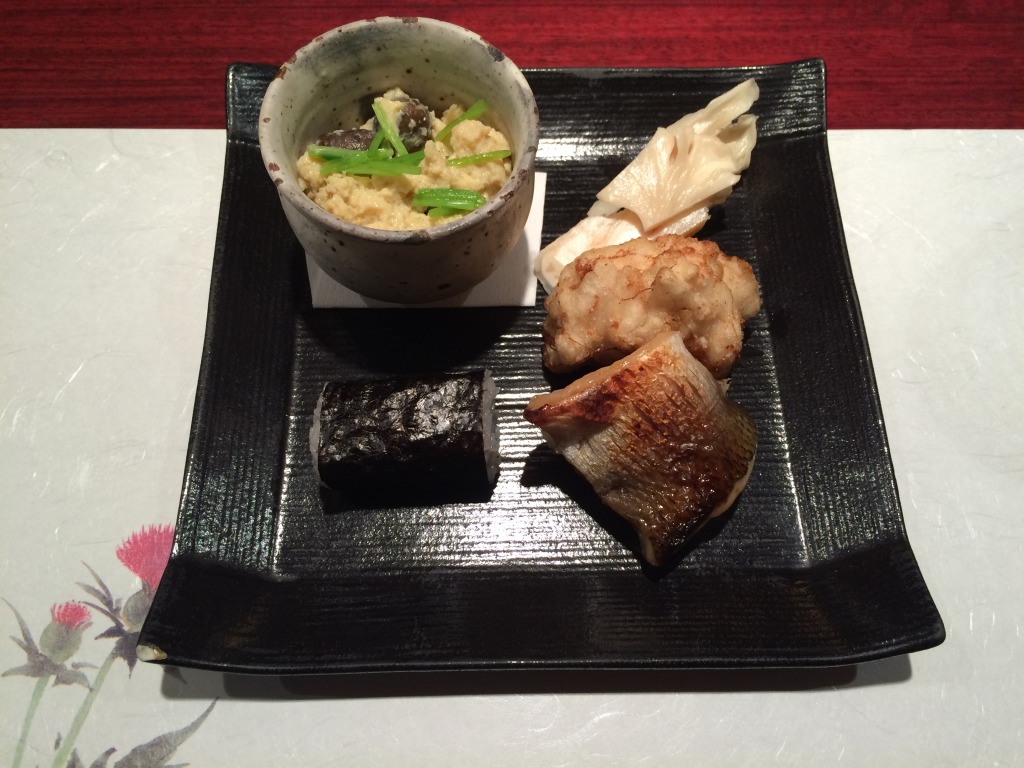


In recent years, a number of outliers such as Rokkaku went far beyond the generic expectations of the izakaya regulars. By serving more sophisticated meals tuned to the English gastropubs or Barcelona’s gourmet tapas of the former El Bulli brain Albert Adria, these Japanese contemporary snacks cum gastronomic wows are catching this exciting culinary wave. It starts with the seasonally tuned paper table coaters. In fall you splash the curry broth over a pinkish print of a thistle, while in spring sakura (cherry blossom) enters the lens of your eye as a pea soup and grilled bamboo shoots pop into the multi-course set menu.
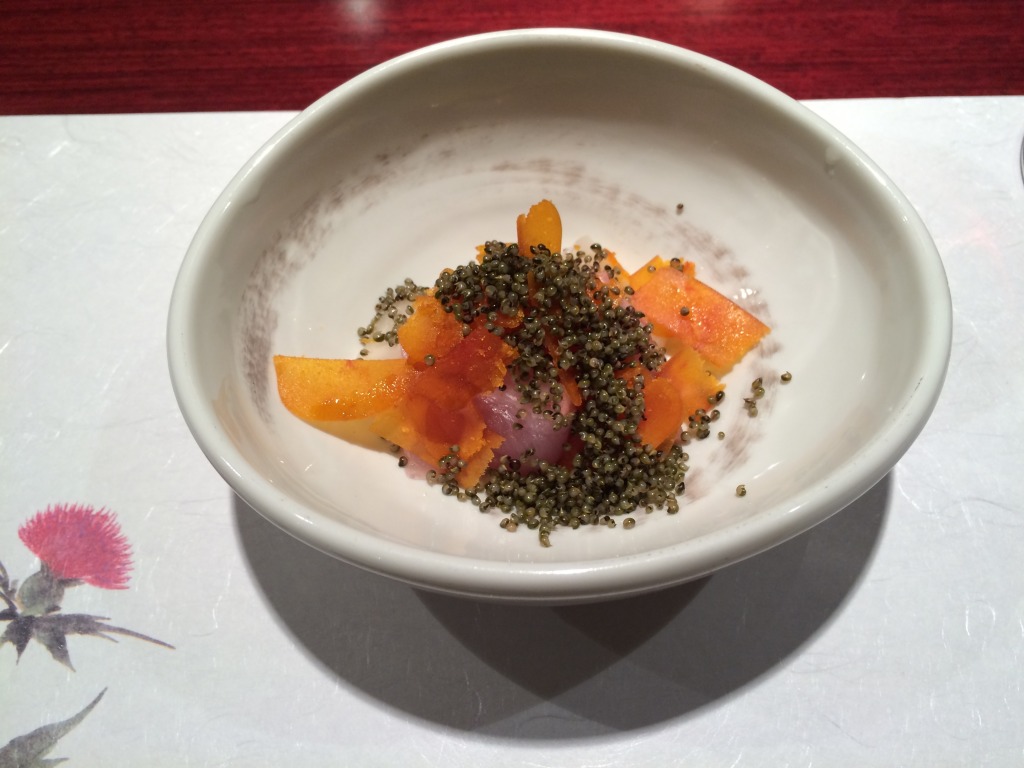
The chef Azabu Rokkaku trained for many years in Kyoto’s kaiseki restaurants and his elaborate yet simply appearing food reflects on this refined experience. He speaks some English, and with the help of his two assistants accommodates your taste.
Rokkaku is at least a level up from the typical izakaya. The delightful gastronomic snacks in the kaiseki fashion highlight the best seasonal ingredients. The menu remains similar, with only small seasonal fish and vegetable alterations. Nevertheless, the chef adds courses upon request. Feeling like uni? He will turn out a creamy uni wrapped in shiso and deep fried like a tempura.
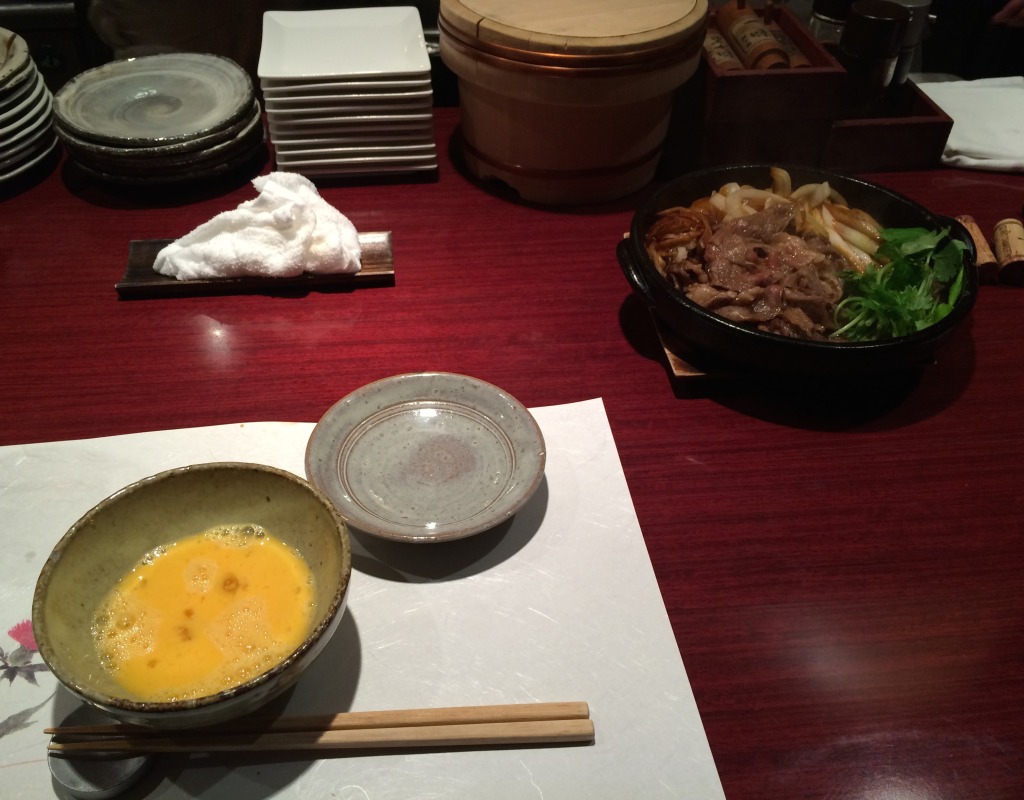
Starting with a refreshingly balanced plate of seasonal sashimi like Sea Bream (Tai) seasoned with a slightly sweet Japanese pickled radish, enriched by intense locally made Bottarga shavings, and sparkled with a popping grain resembling quinoa, your expectations are set for an impressive succession of dishes. Then a kaiseki-style assemblage of marinated fried fish, scrambled eggs with baby taro balls, tuna roll and two incredible mouthfuls of deep fried maitake mushrooms and cod fish sperm, usually follows as does a bowl of clear soup with seasonal touch like peas and fish balls.
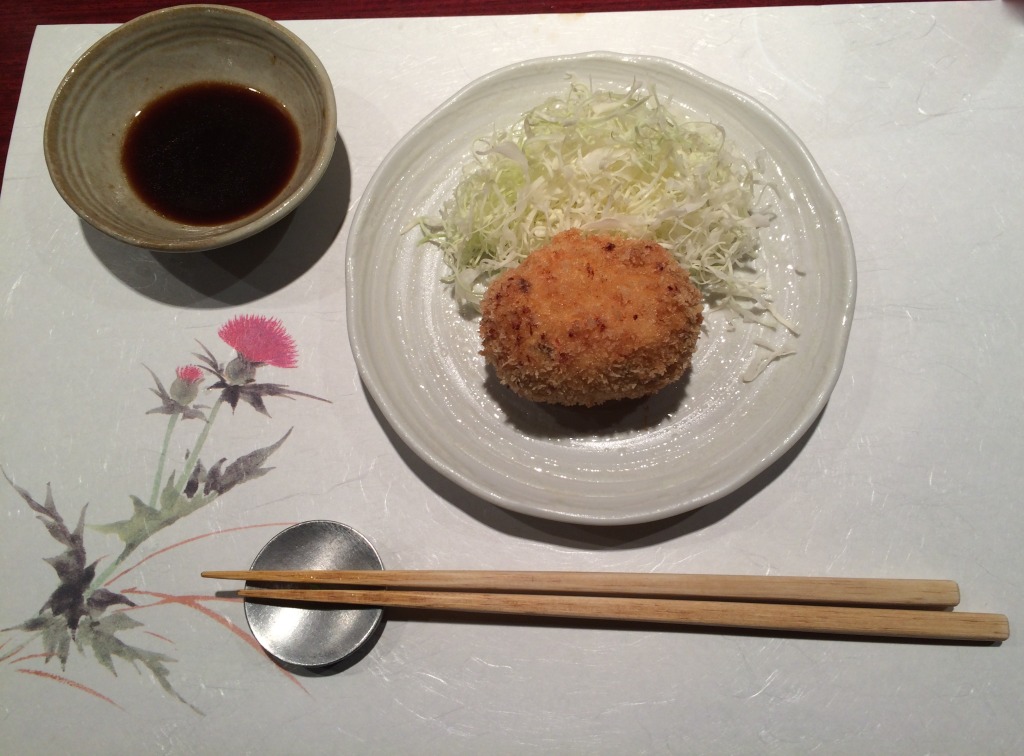
Some favourite staples such as the Fried Oyster, Beef with seasonal mushrooms and vegetable shabu-shabu accompanied by raw egg dip, and the Rokkaku Curry udon with Kujo green onion and tofu remain at hand to please regular guests anytime their cravings bring them in. We always order the curry udon after the chef’s initial tasting plates. Away from the spices, another warming dish is the delicious sizzling pot of shabu-shabu. The Curry’s allure dwells in the perfectly cooked thick udon noodles and a hearty spicy broth. Overall, it is much lighter than its Indian and Thai sisters, while strings of fried tofu skin and eggs added drier texture and chopped green onions some zest, making for a satisfying meal. Two regulars joining us at the bar seats came specifically for the Curry Udon and slurped it joyfully, interrupting in between only with their sighs of pleasure. We all got a paper bib to spare our clothes from accidental drippings. The Kyoto style Hamburg, a coarse beef patty with tomato sauce and seasonal vegetables like pumpkin was not our preferred style though. At Henry’s conceived by the yakiniku master Kentaro Nakahara, you will get a much better, succulent burger.
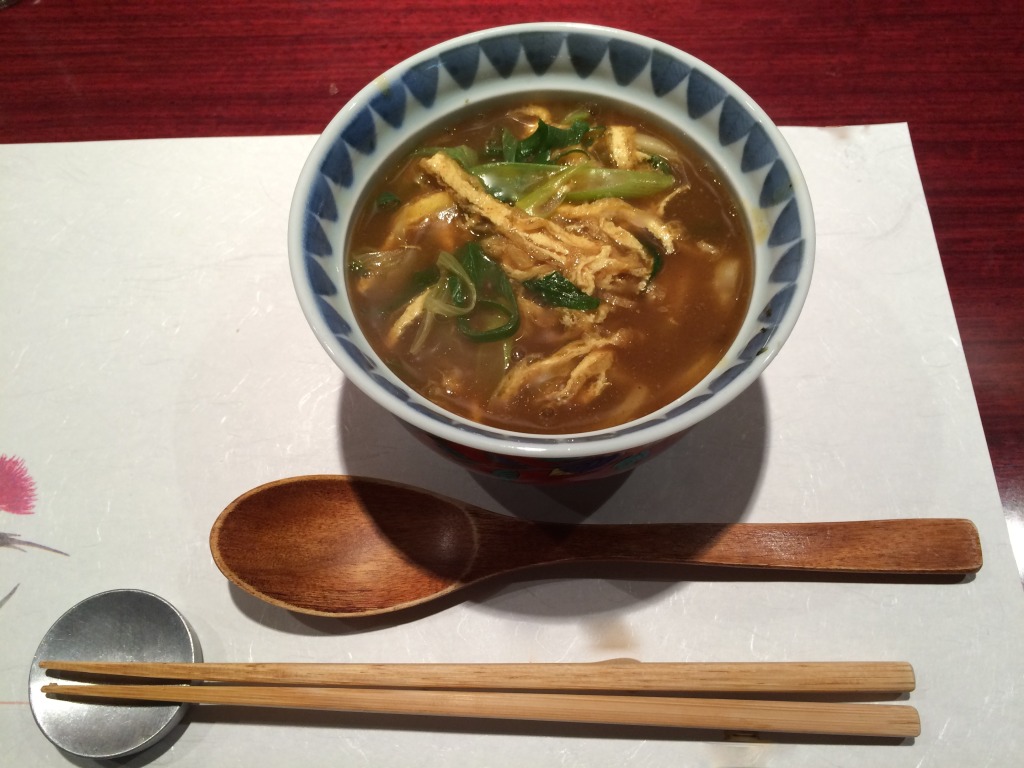
One of my favourite mouthfuls is something translated to me like Fried mushrooms and seafood ball with a dip of soy sauce and side of freshly grated Chinese cabbage. Doughy texture inside, crisp tempura batter on the outside, it was the perfect tapas with the glass of my red Burgundy. A Grand Cru or a village wine (we had both), the freshness of the Pinot and the acidity balanced the fatty nature of the fried dish.
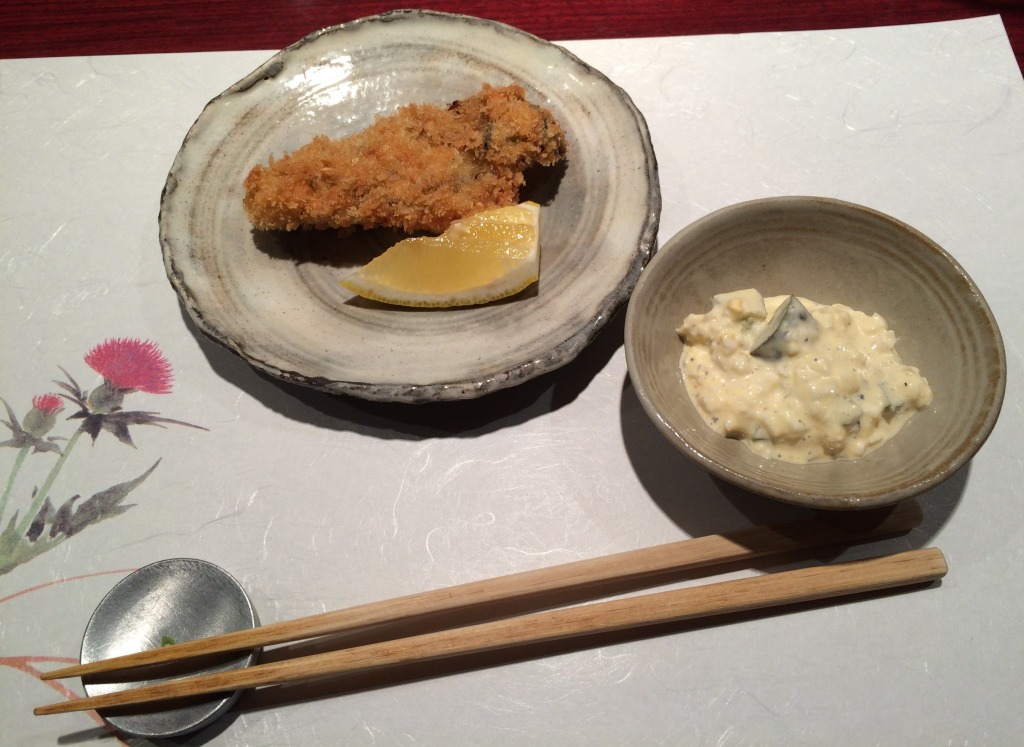
The Fried oyster served with homemade tartare sauce is a must have. The delicate texture of the large Japanese oyster, the perfectly crunchy but not oily tempura coat, a squeeze of lemon for freshness and chunks of eggs and pickles in the house style tartare sauce, all won me over as a randomly satisfied oyster fan. For me, more convincing than the legendary oyster omelette at Singapore’s hawker food courts.
Rokkaku’s Egg omelette with black truffles from Provence is also one of the popular staples. Rolled into a smooth wrap its warm surface melts together forming a small roll, that lets the knife smoothly through but holds in together when transferred with chopsticks into your mouth. It is a great plate to round off the savoury part of the meal.
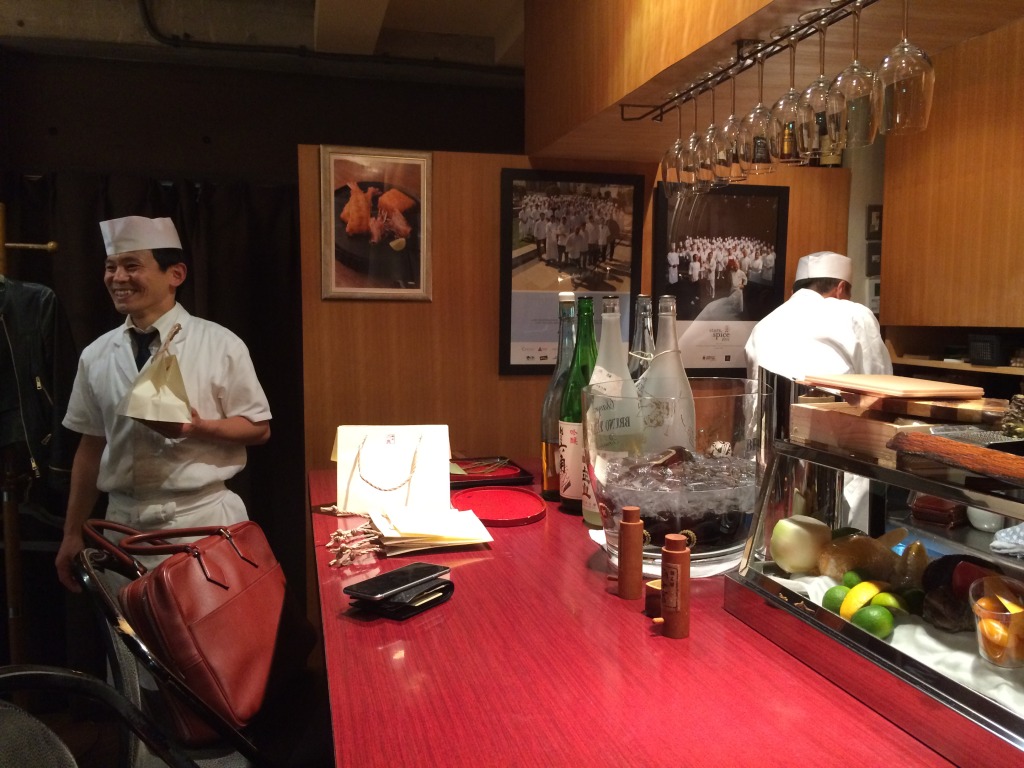
When ingredients run out, the chef does not hesitate to improvise. With some local guests showing up without reservations, Azabu Rokkaku must be ready. Leave some space for a dessert. While simple, the scoop of rich Black sesame ice cream with sesame or peanut cookie, is impossible to resist, and despite being very full, I always clean up my last bowl thoroughly.
The atmosphere of the tiny European bar-like room is lively and friendly. If you are travelling from further away, book ahead.
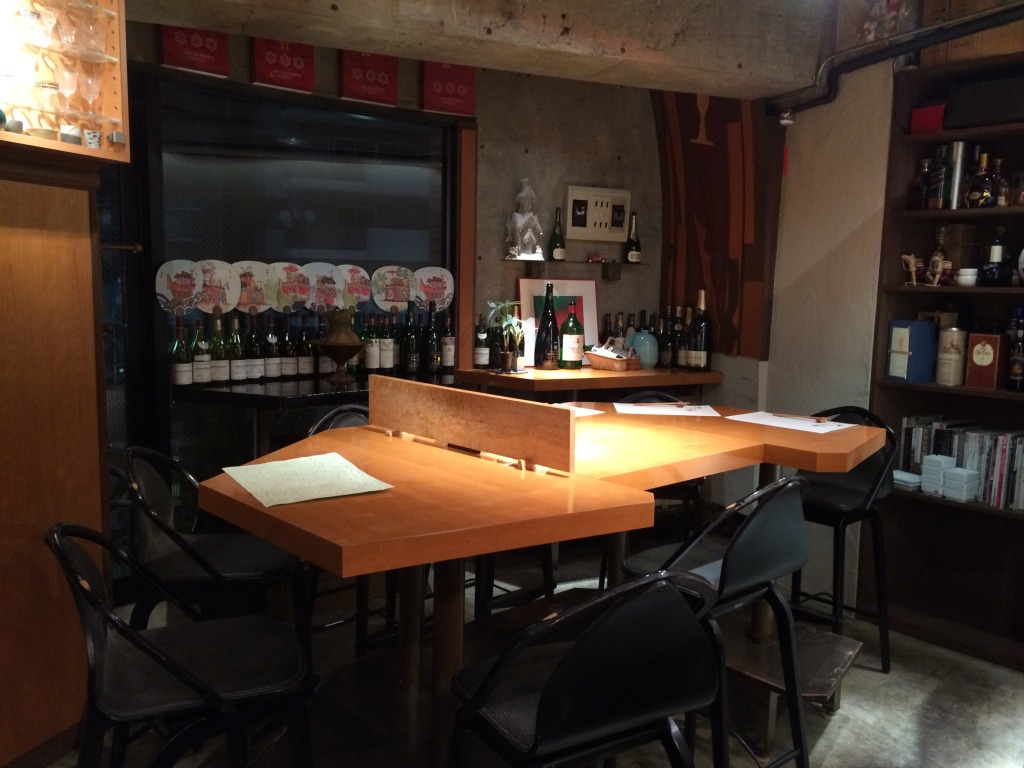
The drinks selection is good: bottles of Bordeaux, Burgundies, some New World wines alongside a wide selection of sake as well as award-winning Japanese whiskies. BYOB is accepted, and some regulars bring their own bottles of wine. The corkage is ¥4,000 per head, therefore it is a better value to bring more bottles for a wide choice, as you can always take the rest home.
With izakayas becoming more popular abroad, they are slowly catching up with the cool vibe of sushi. Such excellent chefs as Azabu Rokkaku, this style of Japanese snack food can inspire the ever-changing gastronomic offerings around the world. In California, New York, Paris and London the izakayas are popping up in full force, but none is as good as Rokkaku.
4th Floor, Yuken Azabu building 10, 1-5-5 Azabujuban, Minato-ku, Tokyo.
!!Beware, there is no sign in English, so just take the lift to the 4th floor and walk in.
Dinner only 6 – 11 pm. Closed during the Golden week, mid-August, between late December and early January.
+ 91 03 3401 8516

